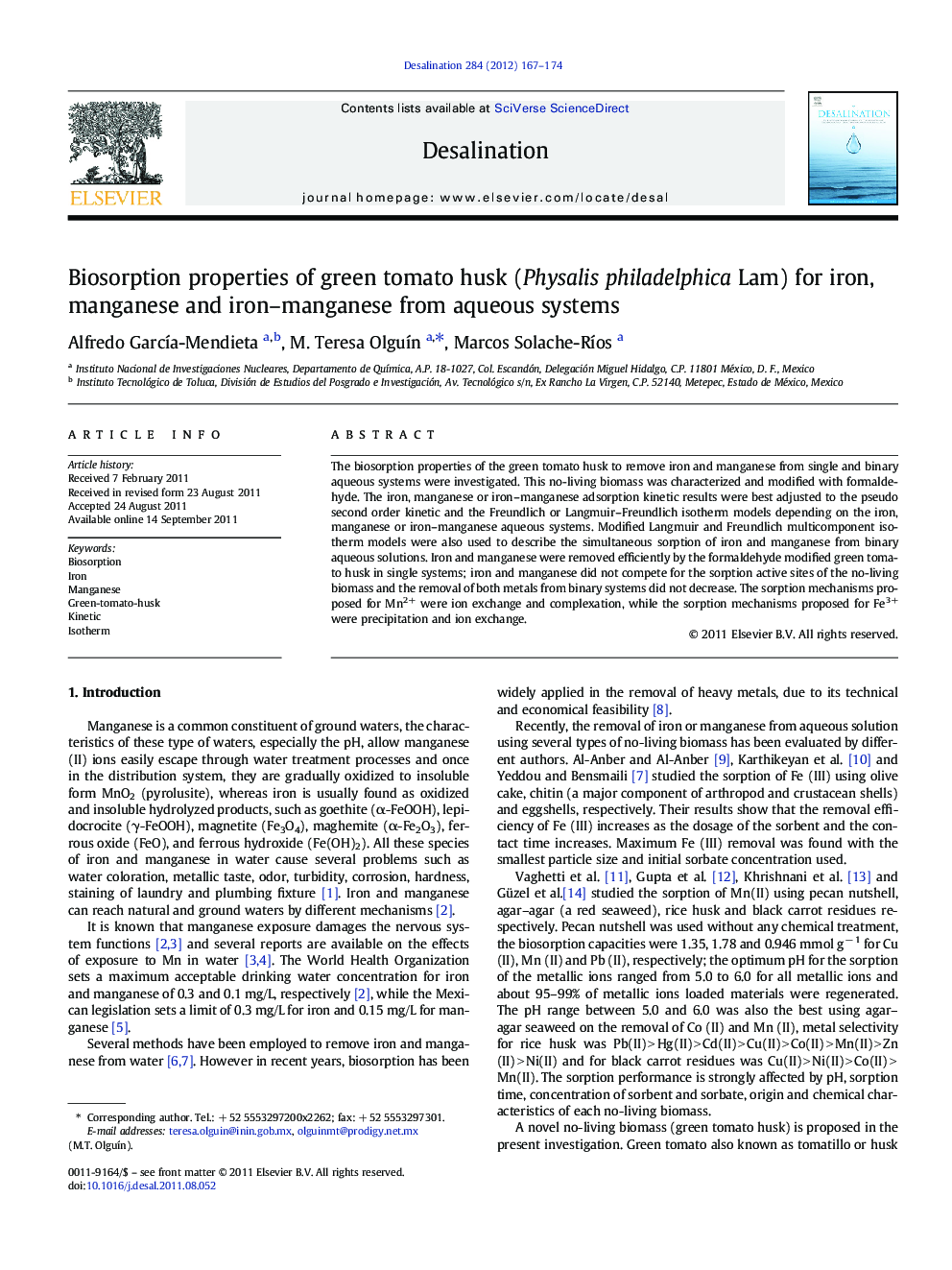| کد مقاله | کد نشریه | سال انتشار | مقاله انگلیسی | نسخه تمام متن |
|---|---|---|---|---|
| 624674 | 1455407 | 2012 | 8 صفحه PDF | دانلود رایگان |

The biosorption properties of the green tomato husk to remove iron and manganese from single and binary aqueous systems were investigated. This no-living biomass was characterized and modified with formaldehyde. The iron, manganese or iron–manganese adsorption kinetic results were best adjusted to the pseudo second order kinetic and the Freundlich or Langmuir–Freundlich isotherm models depending on the iron, manganese or iron–manganese aqueous systems. Modified Langmuir and Freundlich multicomponent isotherm models were also used to describe the simultaneous sorption of iron and manganese from binary aqueous solutions. Iron and manganese were removed efficiently by the formaldehyde modified green tomato husk in single systems; iron and manganese did not compete for the sorption active sites of the no-living biomass and the removal of both metals from binary systems did not decrease. The sorption mechanisms proposed for Mn2+ were ion exchange and complexation, while the sorption mechanisms proposed for Fe3+ were precipitation and ion exchange.
Green tomato husk (Physalis philadelphica Lam), a biosorbent to remove iron, manganese and iron–manganese from aqueous systems.Figure optionsDownload as PowerPoint slideHighlights
► The formaldehyde in the no-living biomass slightly improves the sorption process.
► The rate constant of pseudo-second order is affected by the metallic species.
► Different isotherm models describe the experimental data.
► There is not any competition between iron and manganese for the active sites.
► Ion exchange, complexation and precipitation are the main sorption mechanisms.
Journal: Desalination - Volume 284, 4 January 2012, Pages 167–174